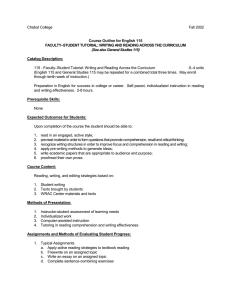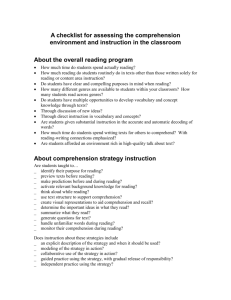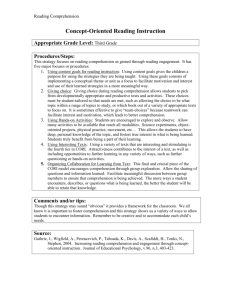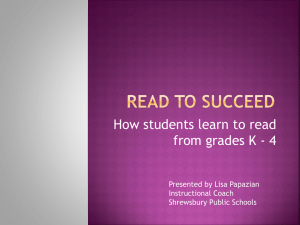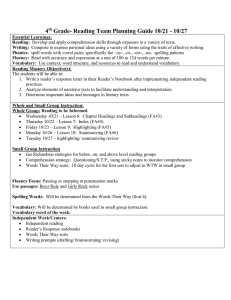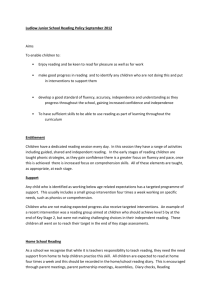Reading Skills Checklist for Schools
advertisement
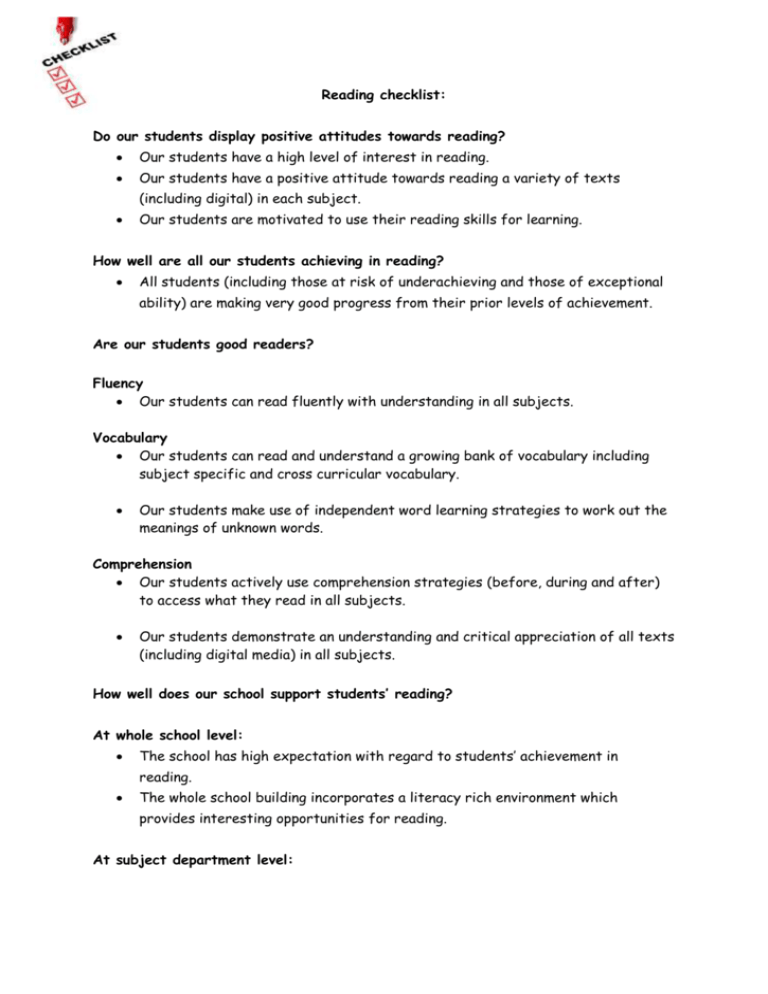
Reading checklist: Do our students display positive attitudes towards reading? Our students have a high level of interest in reading. Our students have a positive attitude towards reading a variety of texts (including digital) in each subject. Our students are motivated to use their reading skills for learning. How well are all our students achieving in reading? All students (including those at risk of underachieving and those of exceptional ability) are making very good progress from their prior levels of achievement. Are our students good readers? Fluency Our students can read fluently with understanding in all subjects. Vocabulary Our students can read and understand a growing bank of vocabulary including subject specific and cross curricular vocabulary. Our students make use of independent word learning strategies to work out the meanings of unknown words. Comprehension Our students actively use comprehension strategies (before, during and after) to access what they read in all subjects. Our students demonstrate an understanding and critical appreciation of all texts (including digital media) in all subjects. How well does our school support students’ reading? At whole school level: The school has high expectation with regard to students’ achievement in reading. The whole school building incorporates a literacy rich environment which provides interesting opportunities for reading. At subject department level: Subject specific and individual teacher plans reflect the school’s strategy and action plans for improving students’ reading skills. Subject departments maintain a range of relevant hard-copy and digital reading materials which stimulate students and broaden their content knowledge. All subject departments identify the reading skills relevant in their own subject areas. At individual teacher level: Students’ prior knowledge is accessed in advance of new reading material. Clear and relevant purposes for reading activities are set in all subjects. Teaching approaches support students in engaging with the reading demands of the subject. Agreed strategies to support the development of students’ reading skills are undertaken by subject departments on a consistent and appropriate basis. Examples include: Direct, explicit teaching of comprehension strategies Explicit teaching of vocabulary Repeated exposures to new vocabulary Collaborative reading strategies Guided reading Teachers’ modelling of reading When asking questions related to students’ reading tasks, teachers include lower and higher order questions. Teachers regularly use links to students’ out of school reading activities to support student engagement with reading in their subject. Students are provided with opportunities and/ or directions to use digital resources as part of their reading activities.

